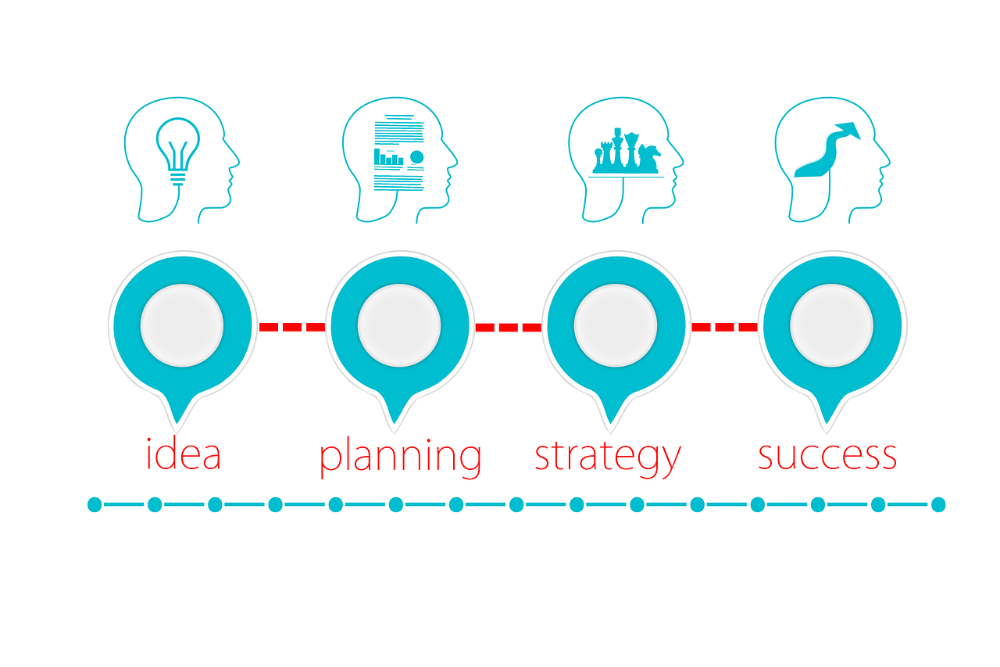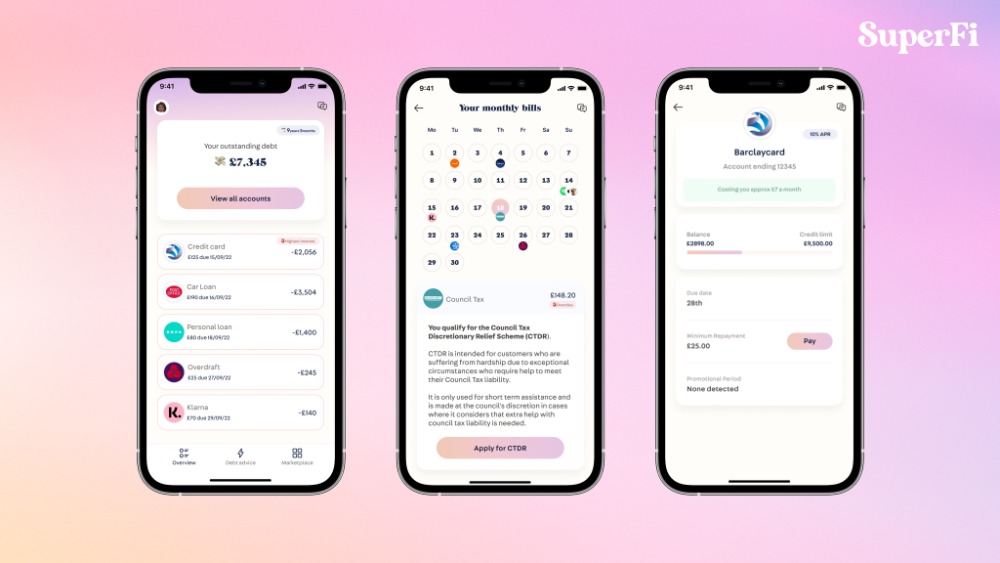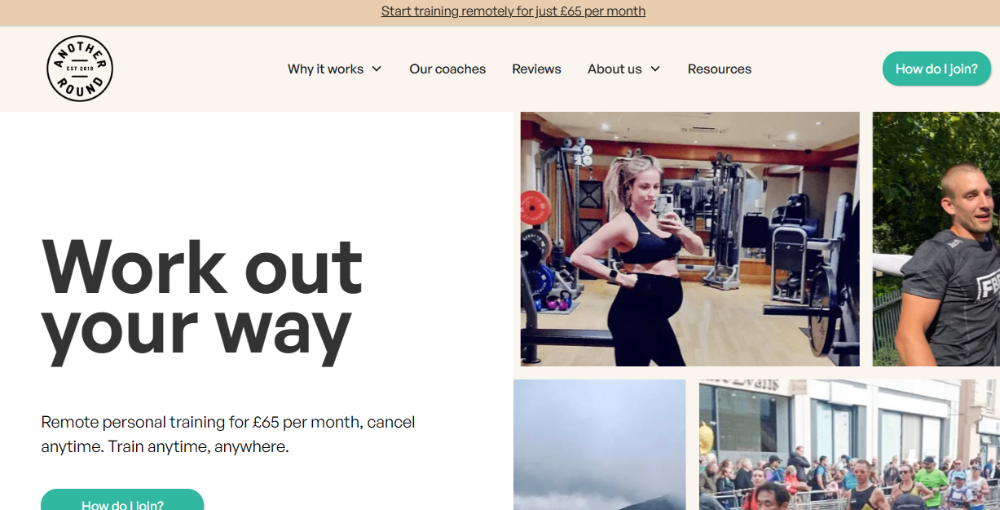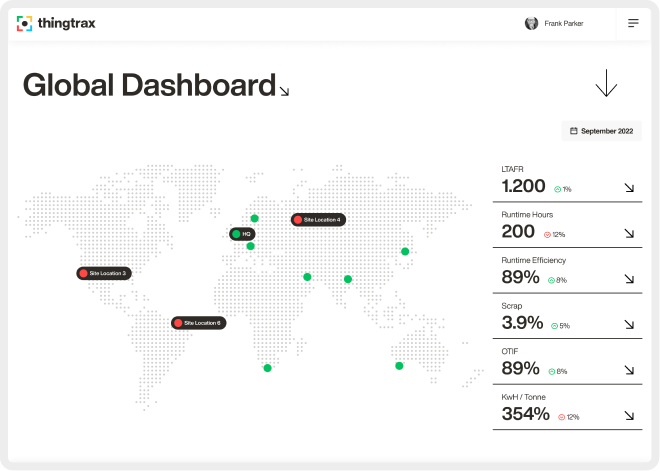Build Your Startup from Ground-up with this 10-minute Read

by Startacus Admin

This article will help you understand the mindset and the process of what you will go through during the phases of building up your startup.
Many young graduates and skilled employees ponder upon the idea of jumping ship and starting their own venture. If you fall into that category, you’ve come to the right place!
This article will help you understand the mindset and the process of what you will go through during the phases of your startup. There will be times when  self-doubt and pessimism will get the better of you, but the will to see your idea through and make your dream a reality is the only key to success.
self-doubt and pessimism will get the better of you, but the will to see your idea through and make your dream a reality is the only key to success.
Let’s start from the basics, the point of initiation of your idea and the ground research that will help you identify the potential of your idea. This is where you carry out the groundwork, research, market analysis, and market gap identification.
Evaluate Your Idea: Survey and Research
The first step requires you to decide whether you are pursuing this as a full-time business that will run for a significant time frame or a side hustle to escape the mundane complications of a 9 to 5 work routine. If you’ve opted for the startup, you will need to give it time to mature. And above all, you have to be passionate about your idea.
During this process, you need to ask yourself a lot of questions, including:
Do I have the necessary skills to create/manage/operate my business idea?
What is my Opportunity Cost of investing time and resources in this idea?
What market gap am I targeting? How do I plan to fill the gap in the market?
How do I plan to fill the gap in the market?
What is my target audience?
Where will I acquire the necessary funds for my startup?
Are the funds coming from my savings or the financial support from friends and family?
How can I automate and scale my business idea?
Can I effectively test run my product/service?
Can I prediction (with some accuracy) the performance of the business idea in Year 1, Year 4 and Year 6?
What additional resources will I need to manage business idea operations?
Do I have the industry knowledge and/or industry experts to advise me?
What legal considerations do I need to factor in?
What is my exit strategy in case my business idea fails?
Once you have answered these (and other) questions, you are ready for the next phase. This phase requires a detailed analysis so that you can set the groundwork and feasibility plan for your business idea.
Market Research, Competitor Analysis, Unique Value Proposition
When it comes down to market research you would want to map out how your idea resonates with customers, solution providers. Another important consideration in this regard is how your idea stacks up against similar products in the market.
 For this, you’ll have to first identify your audience demographics and then map out how your product/service caters to them. The following three questions will give guide you in the right direction:
For this, you’ll have to first identify your audience demographics and then map out how your product/service caters to them. The following three questions will give guide you in the right direction:
The problem/gap that currently exists in the market?
The pains and gains of the customers using the current products/services in the market?
How your idea solves this problem in its unique way?
The above three questions are broad enough to accommodate almost all business ideas, yet narrow down your analysis to help you reach actionable problem statement(s).
Extending the idea, you'll be able to find the gaps (a.k.a the sweet spots) that will give the desired traction in the market. If you hit the right sweet spots, you'll have customers buzzing around you like bees in an orchard.
The next part of the market research phase is competitor analysis. In this phase, you need to map out a realistic picture of how many products and problem solvers already exist that fill the same gap in the market as your idea.
Market Research for Developing a Unique Value Proposition
Identifying your existing or potential customers helps tweak your idea to cater to a specific unaddressed problem. This analysis will help you come up with data (and ideas) for building your unique value proposition (UVP) - an aspect of your product/service that directly solves the issue faced by the target audience.  Let me explain this using the example of SoundCloud and Spotify. Both platforms provide songs and covers, free of cost. However, Spotify caters to people who are willing to pay for a subscription and listen to original songs. On the other hand, SoundCloud caters to people who wish to listen, record and publish covers of songs - because publishing original songs with proper licensing is expensive.
Let me explain this using the example of SoundCloud and Spotify. Both platforms provide songs and covers, free of cost. However, Spotify caters to people who are willing to pay for a subscription and listen to original songs. On the other hand, SoundCloud caters to people who wish to listen, record and publish covers of songs - because publishing original songs with proper licensing is expensive.
This is how SoundCloud created its UVP and caters to its audience. Its focus is on the creation of new audio content, rather than converting people who have signed up to a subscription package.
Note: Often, business owners revisit the UVP even after the idea has matured into an acceptable product. The main reason behind this revisiting is to widen customer demographics and product/service portfolio.
Running a Pilot Test (Beta-Test)
Now you’re ready to shatter the champaign glass. You have a launch date in mind and you’re closing in on your feasibility plan. Your idea is now transitioning from theory to a practical product or service.
But wait!
Have you made sure that your idea is safe? For this, you need to take care of several legal aspects so that you can safeguard your idea from being stolen. To give you an idea, I have divided these legal aspects into pre-launch and launch phases so that your product has a minimum safety net.
-
Prelaunch
-
Non Disclosure Agreement (NDA)
-
Licensing
- Launch
- Trademark
- Copyright License
During the preparations of the pre-launch phase, you must make sure you have signed an NDA with your clients and partners. You should also have the license to use all third-party integrations as you are now preparing to introduce your business idea into the market to avoid any legal complications that could throw a spanner in your operations.
license to use all third-party integrations as you are now preparing to introduce your business idea into the market to avoid any legal complications that could throw a spanner in your operations.
Licensing and NDA
If your product or service uses a third-party API, library or code, it is important to make sure that you have proper permissions to integrate them into your product. While it is best to use open-source products (check for permission to use the product for commercial purposes). If you are using a proprietary product, always purchase a commercial license to avoid legal issues.
To further safeguard your idea, have a lawyer draw up a Non-Disclosure Agreement (NDA) that all the test audience needs to sign. The NDA further protects your idea from being leaked out to the competition.
Trademark and Copyright
The second part of the legal safety net is required just before the launch of the product. Elements of your business such as the brand name need to be locked down through a trademark license.
Once you have finalized the name of your product, you can then protect it with a copyright license. After covering these grounds you are now ready to launch your business idea into the market. It’s time to get feedback and add more value to your product/service based on what your audience needs.
You also need to consider how you plan to raise funding for your product. This would be a good time to interact and find out about angel investors, accelerators, and venture capitalists.
Evaluate the Product through Feedback Survey
After the launch, it’s critical to understand the feedback of customers - the main audience you are targeting. The channels for collecting feedback can be social media, offline channels, pilot testing, and online survey forms.
 The feedback will improve the product to better suit the needs of your customers. You can also cash in this opportunity by getting industry experts to review your product. This works as a great brand-building activity.
The feedback will improve the product to better suit the needs of your customers. You can also cash in this opportunity by getting industry experts to review your product. This works as a great brand-building activity.
You can also onboard journalists, influencers, bloggers, social media butterflies during this time to review your product to gain more insights about its potential. Through this method, you can create a lot of buzz around your product and brand.
After this, the next phase is about incorporating feedback and improving your product. Here’s what you need to know about what to do now and what can be kept for later.
Product Improvements & Pricing Strategy
After launching your product/service in beta, you should have the audience’s feedback. Consider this data to be a valuable asset for your brand because you have actionable intelligence on how you can define your brand’s relationship with the customers.
You already have the MVP of your product/service, so you should be now focus on adding value based on the public’s feedback. You will notice that the feedback doesn’t stop at the functionality and design of the product/service, but it also incorporates the pricing strategy and how much people are willing to pay for your idea.
This is how you create the pricing strategy of your product/service and then set a budget for activities to promote it. Your business goals directly impact the pricing strategy you wish to adopt for generating revenues and achieving your financial targets.
In a workshop for entrepreneurs, Miriam Christof (Principal at JustJump Marketing) and Jenny Wholly (pricing coach) explained the different business goals. This is what they mapped out:
To strategize properly, it’s important to understand the steps involved in adopting any of these business goals.
Conduct a Market Pricing Analysis
This process requires you to find out the lowest price of the raw materials you need to create your product/service. It is important to understand what prices your competitors or people selling similar products in the market are charging.
Once you finish conducting this analysis, the next analysis you need to perform is on your target audience. You already know what your competitors are  charging for their products/services, however, the findings of this survey will tell you how much your audience is willing to pay for this product/service.
charging for their products/services, however, the findings of this survey will tell you how much your audience is willing to pay for this product/service.
Setting the Price
You can set the price of your product using the following techniques to achieve your business goals.
-
Economy pricing: Everyday low price with the focus on low manufacturing/delivery cost
-
Penetration pricing: Price is artificially low to break into the market
-
Premium pricing: High price for the high-value impressions
-
Value pricing: Understand the value for your customers and their willingness to pay.
-
Price skimming: Go into the market with a high price, but once your competitors follow, lower your cost and implement other pricing strategies
-
Promotional pricing: Discounts for a limited time, one-time deals
-
Competitive pricing: Set the price equal to what your competitors are charging and win the service game
-
Versioning: Offer different tiers for your services or products: good, better, best
-
Sandwich pricing: High, medium and low priced item with the intent to drive customers to the medium-priced item
-
Psychological pricing: Price products or services which trigger action. For example, charging 0.99 instead of $1.00
Once you have set the pricing of your product, you’re now ready for the next phase: advertising aggressively. You are ready to reach out to the world and start reaching out to the local and global audience.
Advertise Globally
At this point, the world is your audience. You would want to reach just about everyone to tell them about your brand.
 The question you’ll ask here is what channels should I use and how much should I spend on advertising? This is very subjective and depends entirely on the nature of your product, the audience, and how you wish to be perceived.
The question you’ll ask here is what channels should I use and how much should I spend on advertising? This is very subjective and depends entirely on the nature of your product, the audience, and how you wish to be perceived.
One of the common and effective ways to reach out is to use referrals. Each customer who refers someone to your business has the benefit of availing discounts and bonus points that will ultimately retain your customer base.
Secondly, people tend to look for reviews of products before purchasing them. This gives them a pragmatic perspective. Focus more on product/service reviews and engage with customers to look approachable.
Reach out through press releases, content marketing through blogs, videos and external sources. These are methods of pushing your product/service out there without investing a large capital.
The use of social media marketing, search engine optimization, pay-per-click advertising, and reaching out to groups and discussion forums greatly improves your overall digital footprint. Google’s ad network itself works wonders in reaching out to a prescribed audience to target sales, signups, or pulling traffic to your website.
During the advertising phase, it’s critical to constantly refer back to the overall brand image that you want your audience to have. Therefore, market yourself in a way that your brand and your product/service are associated as a cluster.
Start Growing the Bottom Line
 Several blogs mention that 71% of businesses fail within the first decade of their inception. The businesses that do make it through still struggle with maintaining the bottom line as they shift from survival mode to ‘beating the competition’.
Several blogs mention that 71% of businesses fail within the first decade of their inception. The businesses that do make it through still struggle with maintaining the bottom line as they shift from survival mode to ‘beating the competition’.
From the point of inception of your business idea, you must have a business plan to stick to, to make predictions. According to Neil Patel, startups that lack a business plan have a lower survival rate. That’s because these startups stand half the chance of raising investment capital during their funding stages.
So, how do you secure your bottom line?
Start with securing appropriate funding for startup and opt for a suitable source. This directly depends on your credit ratings and the ability to obtain a loan. The following sources simplify the process of taking out a loan. Note that the list is sorted in the order of significance:
-
Personal Savings & Credits
-
Friends & Family
-
Venture Capitalists
-
Angel Investors
-
Banks
-
Crows Funding
There are a few pre-requisites every loanee will require to safeguard the investment:
-
Balance Sheet: Statement of assets, liabilities, and capital a business owns at a given time.
-
Sales Forecast: A realistic prediction of future sales based on the information available
-
Profit and Loss Statement: An Income statement regarding the company’s expenses and revenue at a certain time
-
Cash-flow Statement: A statement showing the change in the balance sheet per transaction.
These documents highlight the overall picture of how your business plan will work and grow.
In a Nutshell
You now understand what it takes to build a startup and the multiple struggles you have to go through to see your business idea become a reality. It’s been a great journey and you’re now ready to grow your business into new avenues as it’s stood strong during the test of time. Let’s quickly recap what .png) we have uncovered during and in-between the stages of your startup.
we have uncovered during and in-between the stages of your startup.
-
Evaluate your Idea: Survey and Research
-
Conduct Market Research, Competitor Analysis, and UVP
-
Create MVP, Resources Funds, Licensing
-
Evaluate the Product through Social Media Feedback, Crowd Sourcing, Pilot Testing, Offline, and Online feedback Survey
-
Improve product based on public feedback, feasibility, budget plan
-
Go global and advertise extensively, advertising, marketing, sponsored posts, etc
- Based on the nature of the business, start growing bottom line (revenue in terms of non-profit)
Author Bio: Salman Saleem is a software engineering graduate and digital marketer by profession. He works as a Digital Marketer Strategist at Cloudways. He loves to create value for the Startup community & help entrepreneurs reach their goal. He is a big fan of cricket and does play AAA games in his free time. You can follow him on twitter.
Subscribe to our newsletter
If you would like to receive our startup themed newsletter, full of the latest startup opportunities, events, news, stories, tips and advice, then sign up here. How Manufacturing Businesses Can Reduce Energy Costs
How Manufacturing Businesses Can Reduce Energy CostsGot a business in the manufacturing sector? These tips on how you can reduce energy costs while being more sustainable are well worth a read...
 SureIn Secures €4M to Close the SMB Insurance Gap
SureIn Secures €4M to Close the SMB Insurance GapInnovative InsurTech startup SureIn announces a €4M Seed round to further its mission of making insurance easy, transparent and hassle-free for SMBs.
 How IoT Is Revolutionising Consumers' Daily Lives
How IoT Is Revolutionising Consumers' Daily Lives Nassia Skoulikariti, Director of IoT Programmes, Mobile Ecosystem Forum shares some insights on how IoT is having a significant impact on all our lives.
 How to invest in tech companies with the help of AI
How to invest in tech companies with the help of AIRoger James Hamilton, Founder and CEO of Genius Group, a world-leading entrepreneur Edtech and education group, discusses how introducing a globalized curriculum will help better prepare students.
 SuperFi raises $1M pre-seed funding round
SuperFi raises $1M pre-seed funding roundSuperFi, the debt prevention platform, has announced a $1m pre-seed funding round to support people during the cost of living crisis.
 Startups rely on AI & sustainability for new partnerships
Startups rely on AI & sustainability for new partnerships41 startups from 13 countries, including the UK, have been selected for the 8th Kickstart Innovation program, one of Europe’s leading innovation platforms.
 Another Round closes £300k Seed round to revolutionise personal training
Another Round closes £300k Seed round to revolutionise personal trainingPersonal training platform Another Round has secured £300k in its latest fundraise, including investment from angels and its community.
 Thingtrax Secures £4.3M
Thingtrax Secures £4.3MThingtrax Secures £4.3M to Empower Manufacturers to Build the Factories of the Future
 A measure of inflation relief for small firms
A measure of inflation relief for small firmsA measure of inflation relief for small firms sees transport costs fall but service price increases remain elevated
 A look at HR tech startup HR DataHub
A look at HR tech startup HR DataHubBedfordshire-based HR tech startup HR DataHub has built a range of tools for HR departments
Published on: 30th December 2019
If you would like to enable commenting via your Startacus account, please enable Disqus functionality in your Account Settings.







- SureIn Secures €4M to Close the SMB Insurance Gap 15th Aug 2023 Innovative InsurTech startup SureIn announces a €4M Seed round to further its mission of making insurance easy, transparent and hassle-free for SMBs.
- SuperFi raises $1M pre-seed funding round 28th Jul 2023 SuperFi, the debt prevention platform, has announced a $1m pre-seed funding round to support people during the cost of living crisis.
- Startups rely on AI & sustainability for new partnerships 27th Jul 2023 41 startups from 13 countries, including the UK, have been selected for the 8th Kickstart Innovation program, one of Europe’s leading innovation platforms.
- Another Round closes £300k Seed round to revolutionise personal training 21st Jul 2023 Personal training platform Another Round has secured £300k in its latest fundraise, including investment from angels and its community.







 Daniel Dierkes, David Schara, and Maximilian Geißinger 2.jpeg)

.jpg)




















